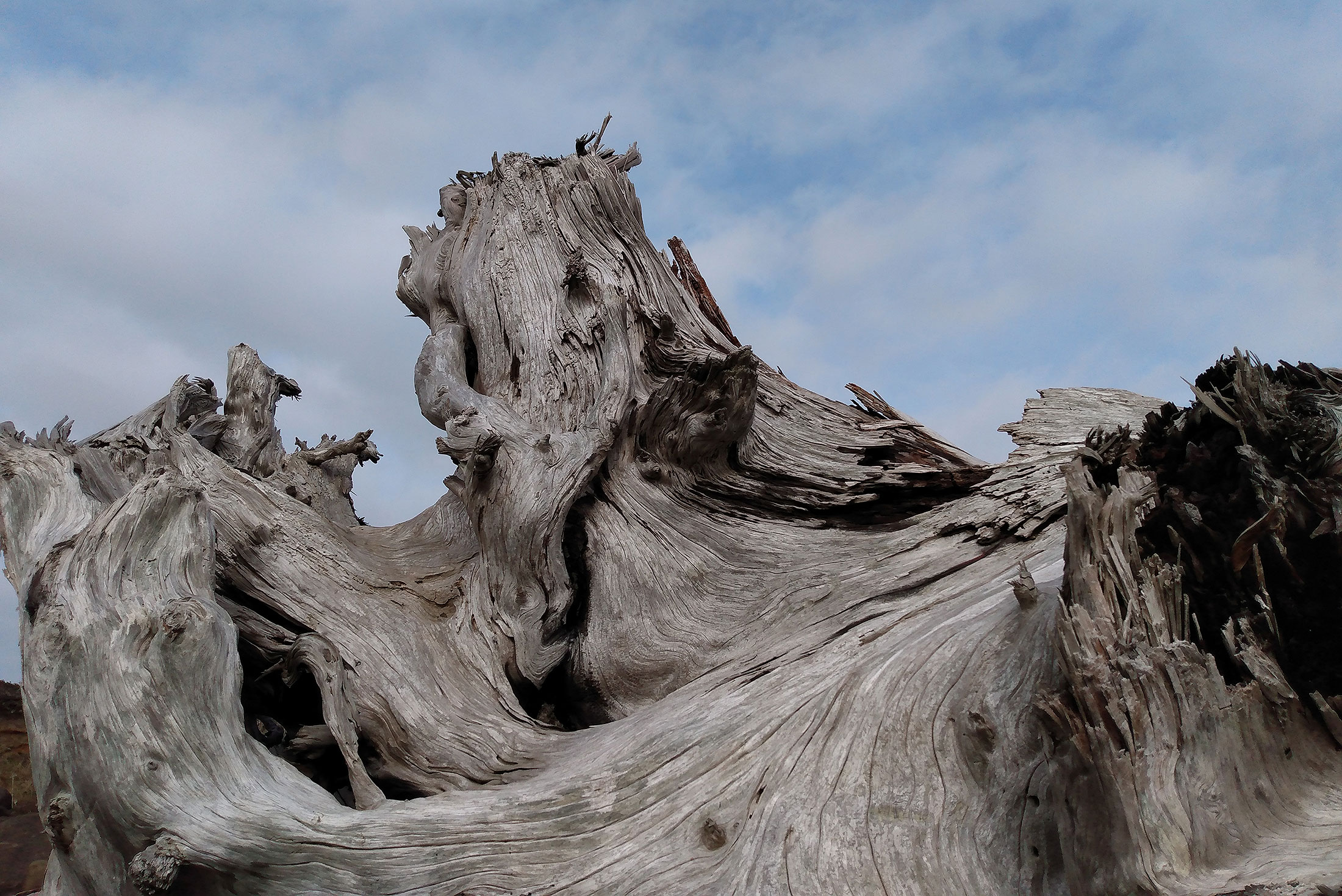
The Allure of Driftwood
Walking along the beaches of Yachats, craggy, weathered pieces of driftwood abound. Some are the giant remnants of great trees fallen, others are small and weathered remainders, worn down by the powers of surf and wind to resemble bones.
Driftwood comes in all sizes and shapes, catching the beachcomber’s eye with its bleached, smooth surface or gnarly knobs. One piece might look like a face, or a dragon. Another might present a shape that inspires the artist’s eye. From photography and paintings to sculptures and jewelry, coastal art galleries attest to the muse that driftwood can be.
Part of driftwood’s mystique is to imagine how far each piece has traveled to reach its place of rest on coastal shores. Because wood is buoyant in water, it can travel quite far. Imagine: a journey from Japan, all the way across the Pacific Ocean, or from inland, floating along a coastal river as debris from a storm, until deposited for good.
Douglas fir, cedar, oak—any kind of wood, really—classifies as driftwood once it’s in water and moved along. Whether moving in water or coming to rest, driftwood contributes to the ecosystem. Wherever it lands, driftwood can trap silt and seeds, the perfect environment for vegetation to grow, or insects to nest. Other animals may feed on this vegetation. Driftwood may provide a haven for fish eggs and makes a great perch for shorebirds.
Driftwood, however, is not without its dangers to humans. Storms make driftwood dangerous in the water, where the wood pieces roil as heavy, deadly projectiles. The morning after a storm, driftwood may be splayed in piles like Pick-Up Sticks on the beach where nothing had been before. But even at rest, these large wood pieces can be swept up on the move again, so it is wise to give driftwood a wide berth.
Covered in salt, driftwood is also unsafe to burn without releasing harmful chemicals. Best to leave it where it is, allowing nature to run its course.
Beachcombers should note that Oregon regulates driftwood collection on its beaches. However, it’s OK to take a small souvenir, whether to keep or to give as a gift, a memorable reminder of how our forest and coastal habitats create powerful magic together.
OCEANS & BEACHES
